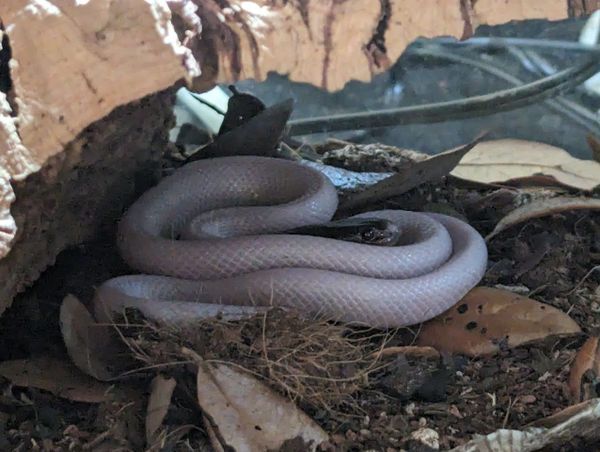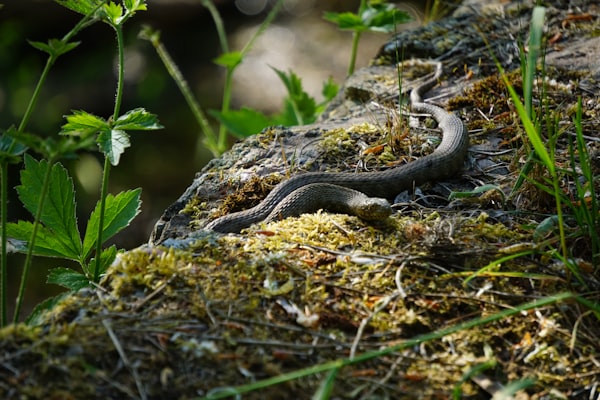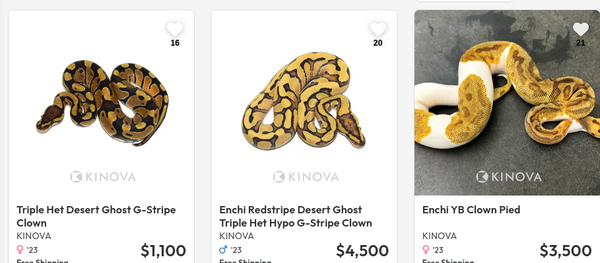Interesting facts about the false water cobra (hydrodynastes gigas)
Learn interesting facts about the false water cobra, including its physical characteristics, habitat, and distribution.

Physical Characteristics
Size
The false water cobra, also known as hydrodynastes gigas, is a large snake that can reach an impressive size. Adult males can grow up to 6 feet in length, while females are slightly smaller, averaging around 5 feet. This makes them one of the larger species of snakes in their habitat.
Biosecurity
Like many other colubrids, false water cobras can carry harmful pathogens including cryptosporidium. These animals may go asymptomatic (not showing disease) while spreading the disease. You should take biosecurity measures for all of your animals and especially the false water cobra.
Coloration
The false water cobra has a unique coloration that sets it apart from other snakes. Its body is primarily a dark brown or black color, with lighter bands or stripes running along its length. These bands can vary in width and intensity, giving each individual snake a slightly different appearance. The belly of the false water cobra is usually a lighter color, often yellow or cream. This coloration helps the snake blend in with its surroundings, making it difficult for predators to spot.
Venom
The false water cobra possesses venom that is primarily neurotoxic, affecting the nervous system of its prey. The venom is not as potent as that of other venomous snakes, such as the forest cobra. However, it is still capable of causing pain, swelling, and tissue damage. Bites from the false water cobra should be taken seriously and medical attention should be sought immediately. Although not typically aggressive, the false water cobra may bite if threatened or provoked.
Habitat and Distribution
Natural Habitat
The false water cobra is primarily found in the tropical rainforests of South America, particularly in the Amazon basin. It prefers areas with dense vegetation and abundant water sources, such as swamps, marshes, and riverbanks. These habitats provide the false water cobra with the ideal conditions for hunting and breeding.
Geographical Distribution
The false water cobra is native to South America. It can be found in countries such as Brazil, Bolivia, Paraguay, and Argentina. This species prefers tropical and subtropical regions, where it inhabits various types of habitats including forests, grasslands, and wetlands. The false water cobra is a highly adaptable snake and can thrive in both terrestrial and aquatic environments.
Conclusion
In conclusion, the false water cobra is a fascinating snake species that possesses unique characteristics and behaviors. From its ability to flatten its neck to resemble a cobra to its preference for aquatic habitats, this snake has captured the interest of researchers and reptile enthusiasts alike. Despite its intimidating appearance, the false water cobra is non-venomous and poses no significant threat to humans. However, it is important to respect and appreciate this species from a safe distance. With its striking appearance and intriguing behaviors, the false water cobra continues to be a captivating subject for further study and conservation efforts.
Frequently Asked Questions
Is the false water cobra venomous?
Yes, the false water cobra is venomous. However, its venom is not considered to be highly potent or dangerous to humans.
What is the average size of a false water cobra?
The average size of a false water cobra is around 4 to 5 feet in length, although some individuals can grow up to 7 feet long.
Where can I find false water cobras in the wild?
False water cobras are primarily found in the tropical rainforests and wetlands of South America, particularly in countries like Brazil, Bolivia, and Paraguay.





